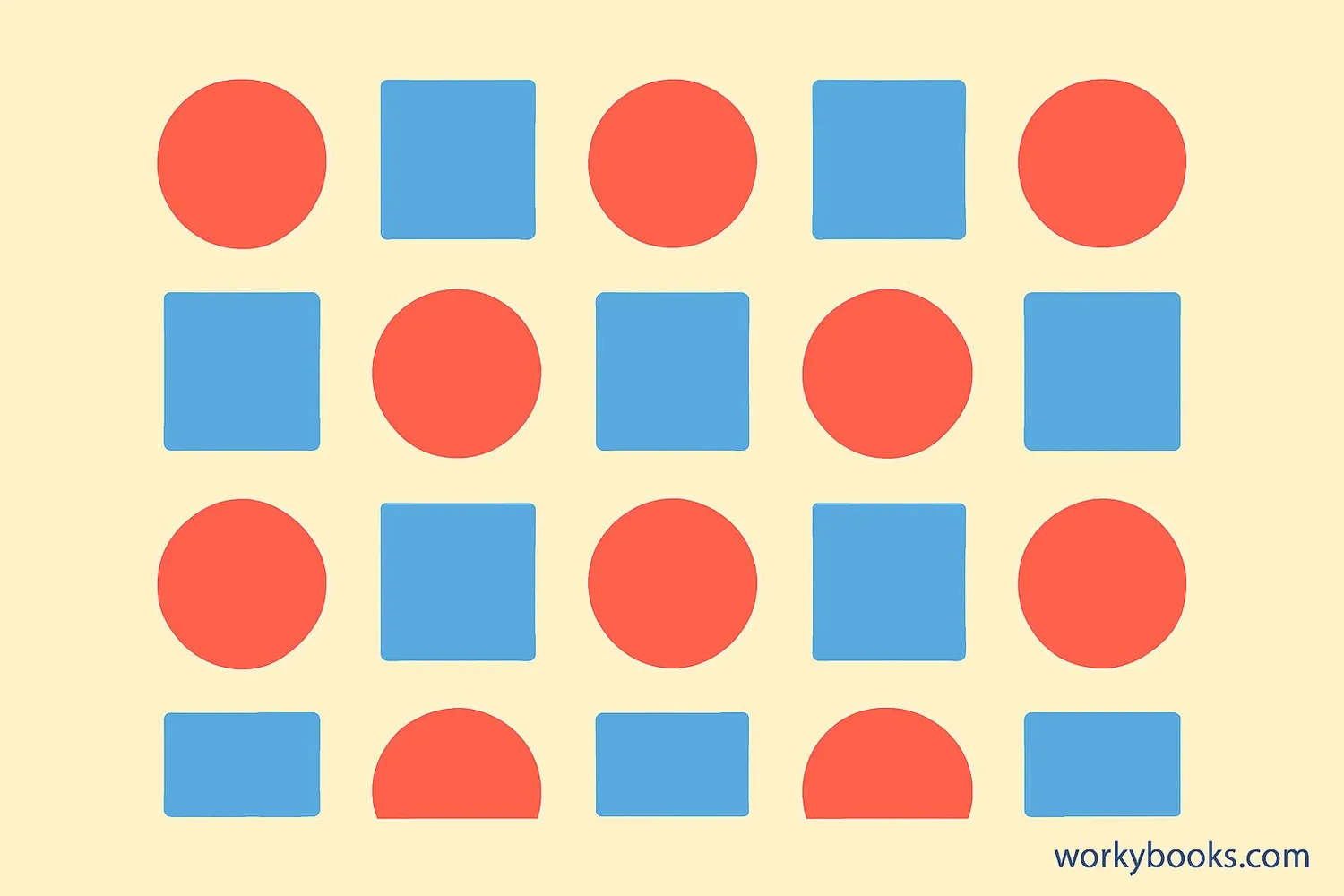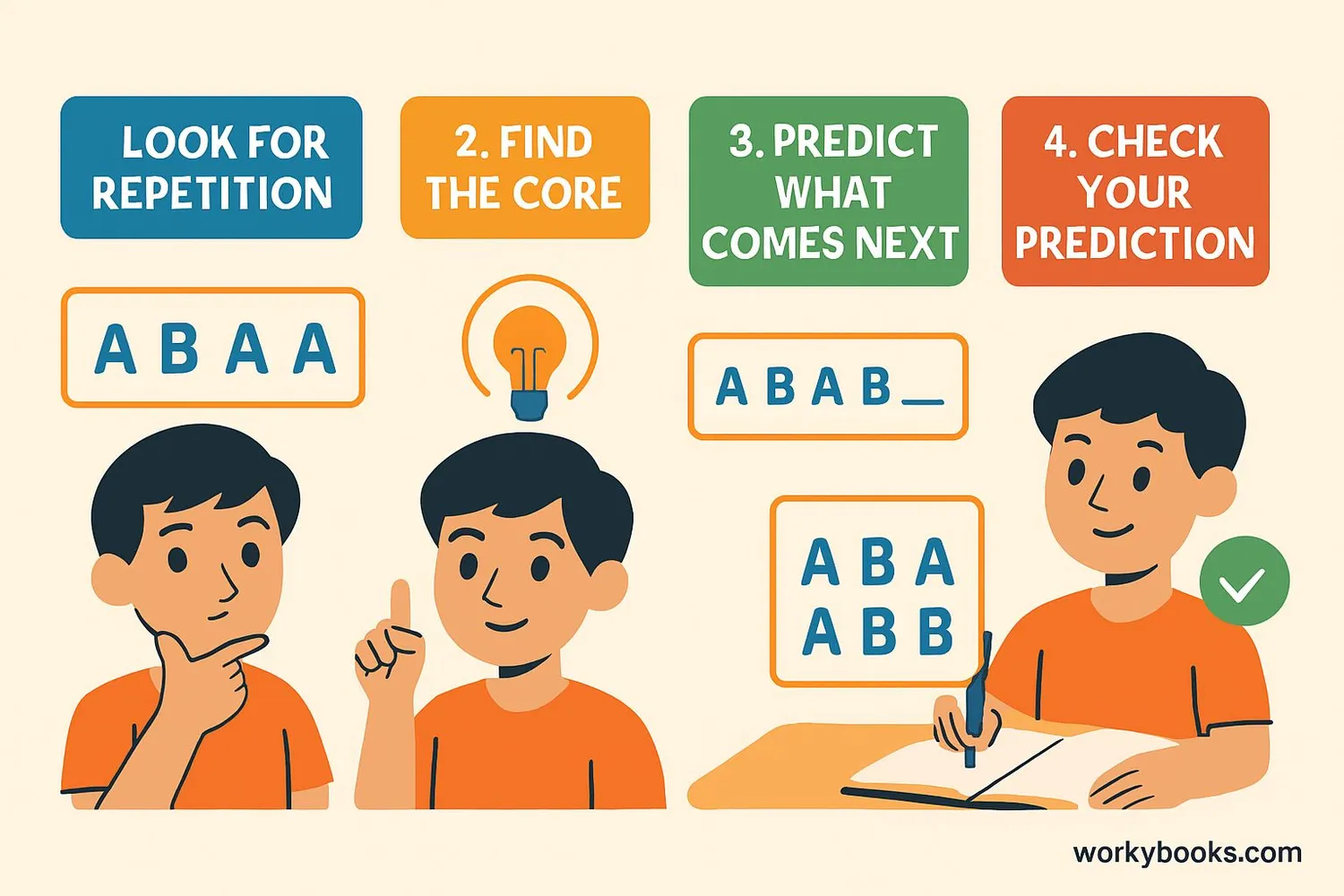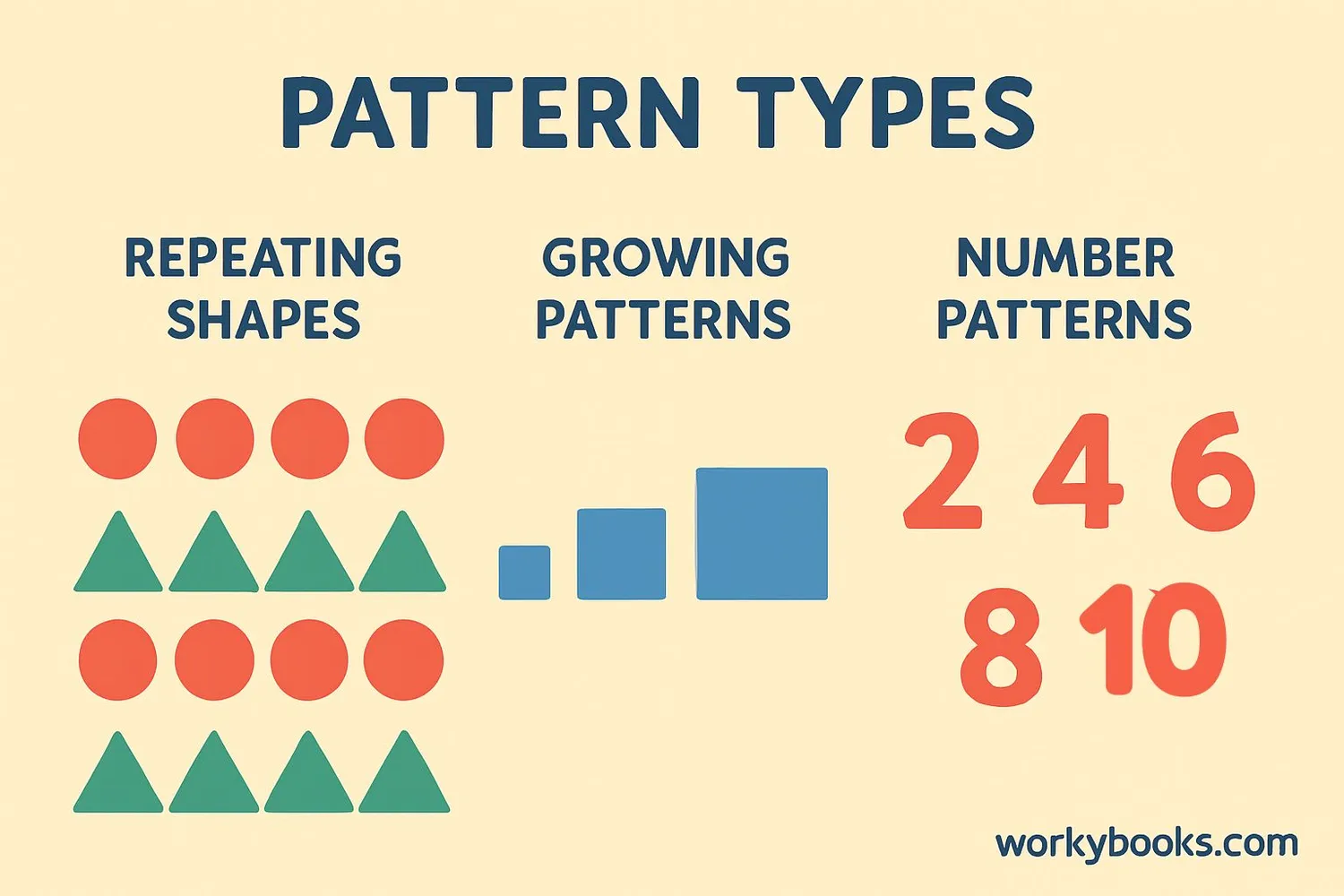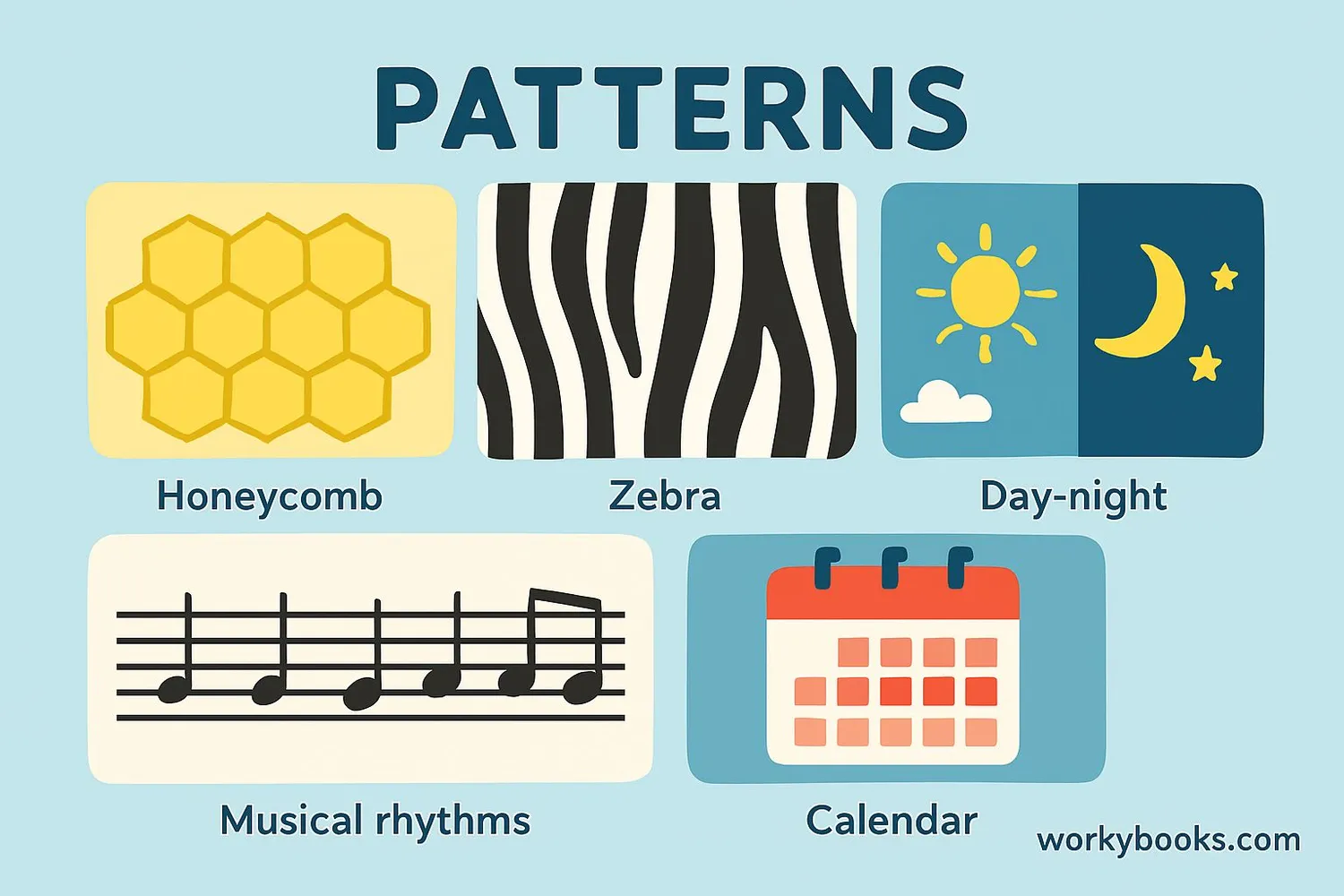Identifying Patterns - Definition, Examples, Quiz, FAQ, Trivia
Learn to recognize patterns in math, nature, and everyday life with easy explanations and practice activities
What is a Pattern?

A pattern is something that repeats in a predictable way. Patterns help us understand how things are organized and what might come next. You can find patterns everywhere - in math, in nature, in music, and even in your daily routine!
Patterns are made up of elements that repeat. The repeating part is called the core of the pattern. Recognizing patterns helps us make predictions and solve problems.
For example, look at this pattern: 🔴 🟡 🔴 🟡 🔴 🟡. The core is "🔴 🟡" and it repeats. What comes next? That's right - another red circle!
Key Concept
A pattern is a repeated design or recurring sequence. Patterns help us predict what comes next.
How to Identify Patterns

Identifying patterns is like being a detective! Here's how you can find patterns:
Step 1: Look for Repetition
Find elements that repeat in the same order
Step 2: Find the Core
Identify the smallest repeating unit
Step 3: Predict What Comes Next
Continue the pattern based on the core
Step 4: Check Your Prediction
Verify if your continuation matches the pattern
Example: Look at this pattern: A B B A B B A B B ...
The core is "A B B" and it repeats. What comes after the last B? That's right - another A!
Remember
Patterns can be found in shapes, colors, numbers, sounds, and even in your daily schedule!
Types of Patterns

Patterns come in many different forms. Here are some common types:
Repeating Patterns
A sequence that repeats the same elements
Growing Patterns
Each step increases in size or number
Number Patterns
Sequences of numbers with a rule
Shape Patterns
Shapes arranged in a repeating order
Pattern Rule: Every pattern follows a rule. For number patterns, the rule might be "add 2" or "multiply by 3". For shape patterns, the rule might be "alternate between circle and square".
Pattern Tip
Look for the rule by asking: "How does each step change from the one before?"
Pattern Recognition in Real Life

Patterns are everywhere in our world! Here are some examples:
Nature: Look at the petals on a flower - many have patterns of 3, 5, or 8 petals. Zebra stripes and leopard spots form patterns too!
Music: Songs have repeating patterns of beats and rhythms. The chorus repeats multiple times in a pattern.
Daily Life: Your daily routine is a pattern: wake up, eat breakfast, go to school, come home, do homework, play, eat dinner, sleep.
Seasons: The year follows a pattern: spring, summer, fall, winter, and then it repeats!
Math: Multiplication tables are number patterns. For example, the 5 times table: 5, 10, 15, 20...
Real-World Tip
Look for patterns around you - in floor tiles, clothing designs, and even in the way books are organized at the library!
Pattern Recognition Quiz
Test your pattern recognition skills with this 5-question quiz. Choose the correct answer for each question.
Frequently Asked Questions
Here are answers to common questions about identifying patterns:
Pattern Trivia
Discover interesting facts about patterns:
Fibonacci in Nature
The Fibonacci sequence (0, 1, 1, 2, 3, 5, 8, 13...) appears in sunflower seed arrangements, pinecones, and seashells. This pattern helps plants grow efficiently!
Unique Animal Patterns
Just like human fingerprints, each zebra has a unique stripe pattern. Even tigers have distinct stripe patterns that help researchers identify individuals.
Ancient Pattern Use
Ancient Egyptians used geometric patterns in their art and architecture over 4,000 years ago. These patterns can still be seen in pyramids and temples today.
Crystal Patterns
Snowflakes form in beautiful hexagonal patterns because water molecules arrange themselves in repeating six-sided structures when freezing.





